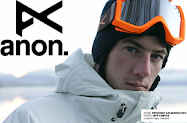In an exclusive interview with the Rising Kashmir avalanche forecaster Brian Newman talks about avalanche forecasting and rescue operations. Newman has been hired by Tourism Department to form a team that can mitigate the snow disasters. Over to Newman…
What is your role as an avalanche forecaster?
Primarily I have three jobs on hand, which involve maintaining safety inside the ski areas, to create a risk advisory and to train the local people for ski patrolling.
I along with my assistant Tim Tuffey and the local trained skiers employed by Tourism Department have identified an area of around 10 square kilometers as a safe ski area. This area primarily falls around the length and the breadth of the Gondola from Gulmarg to peaks of the mountains. It has the potential to be very dangerous and we try to minimize the danger by physical measures using scientific methods. We decide whether a particular area is safe for skiing. If the area is not safe, we minimize the danger by triggering explosions and making the portion risk free or shoot the warning and keep the area closed for skiers.
My second role involves creating awareness for the skiers about avalanches or risks inside ski area using net or by using sign boards. We call this advisory a Bulletin.
The bulletin is available every day on www.gulmargsnowsafety .com
In my third role I along with my assistant, train local skiers for rescue patrolling. These skiers have been employed by Tourism Department and Gondola Cable Car Corporation for ski patrolling and rescue operations.
How do you minimize the danger?
We virtually read into this snow and check its stability by manual methods, using some equipment like temperature probes. If we find that snow is not safe and is prone to avalanche, we trigger explosions which minimize the danger. We also cut the block of ice, read its layers, check the water content and also put some weight on it to check its resistance. After taking all the information, we conclude how snow would behave in certain conditions and accordingly create avalanche advisory.
Some skiers may want to venture outside the ski area. What role does your team perform in that area?
We call it as ‘Back Country’ area. We don’t take any responsibility for them in the back country. We are already covering huge area of 10 square kilometers. This is hectic job and involves risk. We don’t take any avalanche management in this area. We are not either bound to launch rescue operation in the area as we don’t want to put our trained skiers at risk. We can carry out rescue operation only if the risk is not too high.
How many skiers go for skiing on the higher reaches ever day?
The higher reaches remain busy with almost 200 skiers during the whole day. They are mostly foreigners and some of them receive injuries which prompts us for rescue operation. Risk advisory helps them negotiate the terrain through safer slopes.
Have you launched any rescue operation this winter?
We have rescued five skiers so far. One of the male foreigners had broken his leg outside ski area. Our team took a daring rescue after women from Russia broke both of her legs. We had to ferry her to the safe place from a greater area. We also under took rescue operation after the recent avalanche hit army training camp at Khillanmarg. We cooperate with High Altitude Warfare School (HAWS) and they also chip in during rescue operations.
How do you take rescue operation?
The team rushes to the spot where any injured person is stuck along with the medical aid. We carry the injured on sledges stretchers and push the skier to safer places. If the victim is trapped inside the snow, we use sophisticated detectors called beepers to trace out buried skiers by using shovels. The detectors give us signal and we start digging to evacuate the victims.
How long will it take the local skiers fall in your shoes?
I am training 10 skiers for this job and they are now trained enough to launch the operations independently. There are some areas which need more training. I will be here with the Tourism Department as long as they need my service. However, I am working on new proposals along with Tourism Department and Indian Meteorological Department (IMD) to make the avalanche management more sophisticated.
What is the proposal?
We are planning to erect the tower at Kangdori at G4 station of the Gondola which would act as an automated weather station. The tower would give us readings after every five minutes. It will increase the safety of the skiers drastically. The tower may be erected by 2011. This destination has a long ski run which has the potential of attracting more skiers. The safety management has to be sophisticated.
High Altitude Warfare School training camp was hit by avalanche. It is believed that they defied avalanche warning?
They were training in the safe zone but the avalanche came from the dangerous zone. After travelling long distance it hit them, they could not have evaded this natural fury. We classify this type of avalanche as size 4, which destroy heavy structures and also some portion of the forest.
GO: CURRENT BACKCOUNTRY ADVISORY AT GULMARG



No comments:
Post a Comment